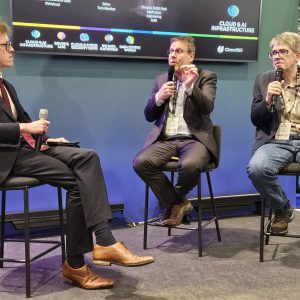
The cloud has accelerated what has already been taking place for half a century: the innovation of technology systems to improve essential business processes. Over this time period, ERP, CRM, and HCM have emerged as essential solutions that automate a core, connected business process in its entirety.
They’ve earned themselves TLAs—three letter acronyms—that are shorthand for both the process and the system. When an enterprise software solution earns a TLA, you know that it has achieved mass acceptance and become an essential market offering.
But, there has been one TLA missing from the roster of essential enterprise processes and solutions. Business Spend Management (BSM) is a unified set of processes that encompass all the ways companies spend money, including procurement, invoice management and expense management – as well as the related processes of contract management, supplier information management, inventory, advanced sourcing, budgeting, and analytics.
BSM, together with ERP (Enterprise Resource Planning), CRM (Customer Relationship Management), and HCM (Human Capital Management) systems collectively and exhaustively address the core operating processes every organisation must manage.
The emergence of BSM lays the ground work for a new era in technology innovation: One in which cloud vendors begin to apply artificial intelligence to extracting prescriptive insights from the huge, cross-customer process-specific data sets they are amassing on their platforms.
ERP
How did we get here? It all started with ERP, the granddaddy of all enterprise technology solutions, which grew out of the inventory control (IC) systems of 1960s. These evolved into the Material Requirements Planning (MRP) systems of the 1970s, which helped manufacturing companies integrate their inventory of parts and products into their production schedules.
In the 1980s, MRP II systems integrated additional modules relevant to the manufacturing process, such as employee and financial requirements. Garter coined the term ERP in the early 90s when the vendors of these systems began adding modules to connect even more processes and integrate them all to a centralized database. The term ERP has been with us ever since.
In the early 2000s, in a bid to own the total business systems topology within the customer organisation, ERP vendors continued adding modules, creating mega suites that could connect virtually every known business process. The software was very complicated, but once deployed it would be around for a long time.
In 2013, Gartner coined the term postmodern ERP, acknowledging that while ERP systems will continue to the be the technology backbone and system of record for most organisations for the foreseeable future, newer, cloud-based best of breeds could add more flexibility and business value in many areas.
CRM
While ERP systems were evolving, a different evolution was taking place with customer facing systems. Before the 1980’s sales people kept their customer information on paper cards in rolodexes. By 1990, technology had improved, and database marketing was pioneered, allowing organisations to analyse customer and prospect lists to issue targeted communications.
In the early ‘90s, sales-force-automation (SFA) systems applied information technology to many of the functions of database marketing and combined them with contact management to connect pre-sales activities such as telemarketing and lead generation.
Siebel Systems defined the CRM market by bringing together all the key customer touchpoints, including customer service, to help companies more effectively manage the whole customer relationship lifecycle. Though Siebel was subsequently bested by Salesforce’s cloud offering, they provided the pioneering vision to understand that best-of-breed solutions could do a better job of handling a specific end to end process than ERP add-ons, and that having a unified process delivering data from every customer interaction to one place created a new source of value. The CRM value proposition still stands today.
HCM
Human resources was the next business department to benefit from an end-to-end cloud solution. With the rise of ERP systems, some HR functionality began to be offered in add-on modules, but it wasn’t until the founding of PeopleSoft 1987 that HCM began to emerge as a category in its own right.
In the early 2000s, cloud technology unleashed a new round of innovation in the category, making HR technology accessible to smaller companies that didn’t have ERP systems and opening it up for users outside of the department so that managers and employees could perform many tasks on a self-service basis. The cloud also spawned a host of best of breed start-ups for various functions such as recruiting, applicant tracking, benefits administration, performance management and more.
Many of these were snapped up by bigger ERP vendors, but Workday arguably did the best job by building out a cloud native end to end system that unified the process, and employee data, in one place.
BSM
We have long had information technology support for many of the underlying processes in Business Spend Management. But, it up until now it has never had a proper name and TLA because the market has consisted of a fragmented collection of ERP add-ons and best of breed point solutions addressing different parts of the process: sourcing and procurement, invoice scanning and workflow, and employee expense management.
These silos are artificial. It doesn’t matter if you spend money through the official procurement process, whether you buy something and submit an expense report for reimbursement, or you order it from a vendor and they send you an invoice. At the end of the day, it’s all just money spent. But, because the spending ran through three different systems, companies could never get a holistic view of their spending data.
The immediate BSM value proposition comes from unifying procurement, invoicing and expenses together in a single automated platform where companies have visibility into one database of all of their spending. Over the long term, there is a continuing value stream from insights derived both from the customer’s own data and from the much larger transactional data set of all customers spending through the platform.
What Comes Next?
This community intelligence is what will drive the next wave of process, product and business innovation.
For the past few decades, much of the value from software innovation has come from automation that has allowed companies to speed manual processes and eliminate repetitive and redundant work. With automated cloud solutions now available for all of the core business operating processes, we will increasingly see cloud providers harnessing machine learning and artificial intelligence to deliver insights from the enormous cross-customer, process-specific data sets they are amassing.
The beauty of this approach is that as more data is gathered, the platform can surface ever smarter and more customized recommendations. It’s an infinitely more powerful value proposition, and it now extends to all four corners of the business.






